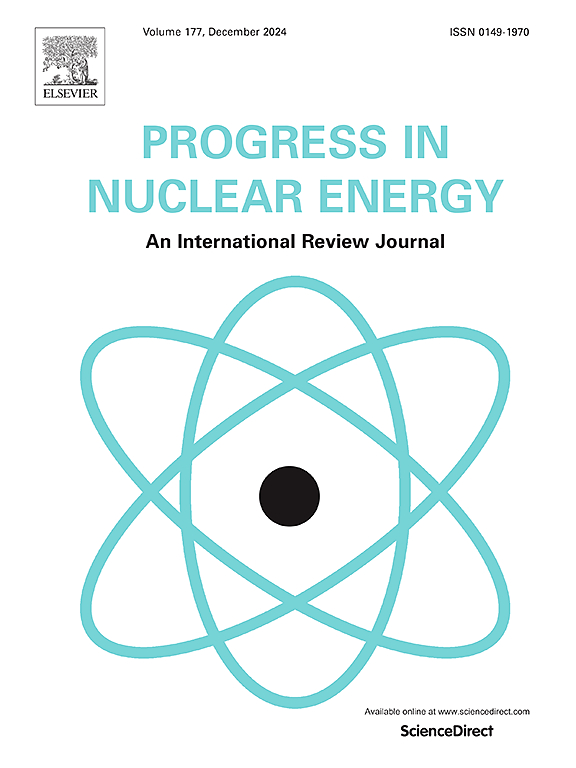A comparative study and design optimization of potential cladding materials for gas cooled fast reactor: Neutronics, radiation shielding, and thermal hydraulics analysis
IF 3.3
3区 工程技术
Q1 NUCLEAR SCIENCE & TECHNOLOGY
引用次数: 0
Abstract
This study presents a comparative analysis of potential cladding materials for gas-cooled fast reactors (GFR), evaluating neutronics, radiation shielding, and thermal hydraulics, and includes optimized mixed cladding design to improve neutronics and overall performance. Eight different cladding materials—SiC, HT9, ODS steel, 15-15Ti, SS 316, TZM alloy, Ta alloy, and Zircaloy-4 were studied. SiC cladding achieved the longest cycle length, with Zircaloy-4 following closely, while metallic models generally showed shorter cycles, except for the optimized TZM mixed cladding, which also achieved extended cycle lengths. Though the optimized Ta alloy model did not achieve a longer cycle length, it improved radial neutron flux distribution and reduced radial power peaking factors, with TZM model contributing similarly. The study also found that SiC, TZM, and Ta alloy models produced harder neutron spectra and demonstrated reduced fissile inventory depletion and enhanced minor actinide transmutation. SiC and TZM model had the smallest reactivity swings, with all models except HT9 and ODS steel showing satisfactory beta effective values, and all models except Zircaloy-4 exhibited acceptable negative Doppler constant values. Radiation shielding assessments revealed SiC had the highest HVL, TVL, and MFP, while TZM and Ta alloy had the lowest, indicating better shielding performance. Thermal hydraulics analysis showed that these two materials exhibited lower peak temperatures in both fuel and cladding, along with a more uniform temperature distribution compared to other models. Despite these differences, all models maintained an adequate thermal margin in the cladding region.
求助全文
约1分钟内获得全文
求助全文
来源期刊

Progress in Nuclear Energy
工程技术-核科学技术
CiteScore
5.30
自引率
14.80%
发文量
331
审稿时长
3.5 months
期刊介绍:
Progress in Nuclear Energy is an international review journal covering all aspects of nuclear science and engineering. In keeping with the maturity of nuclear power, articles on safety, siting and environmental problems are encouraged, as are those associated with economics and fuel management. However, basic physics and engineering will remain an important aspect of the editorial policy. Articles published are either of a review nature or present new material in more depth. They are aimed at researchers and technically-oriented managers working in the nuclear energy field.
Please note the following:
1) PNE seeks high quality research papers which are medium to long in length. Short research papers should be submitted to the journal Annals in Nuclear Energy.
2) PNE reserves the right to reject papers which are based solely on routine application of computer codes used to produce reactor designs or explain existing reactor phenomena. Such papers, although worthy, are best left as laboratory reports whereas Progress in Nuclear Energy seeks papers of originality, which are archival in nature, in the fields of mathematical and experimental nuclear technology, including fission, fusion (blanket physics, radiation damage), safety, materials aspects, economics, etc.
3) Review papers, which may occasionally be invited, are particularly sought by the journal in these fields.
 求助内容:
求助内容: 应助结果提醒方式:
应助结果提醒方式:


